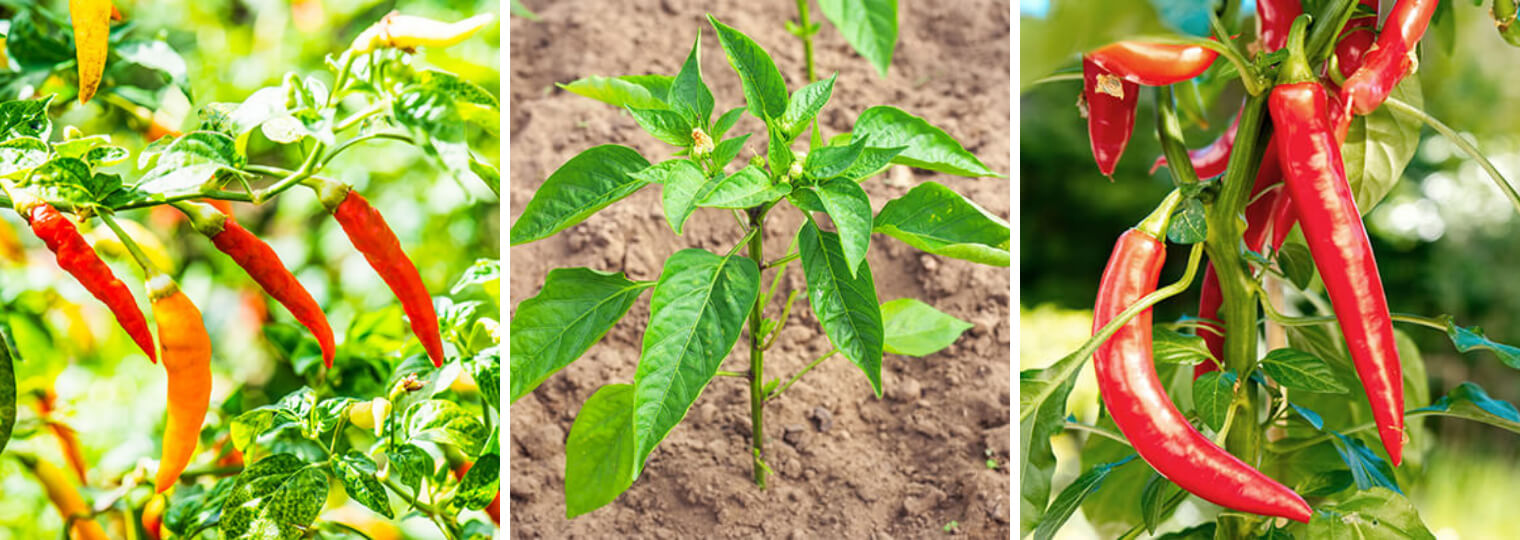 Back to the Be Inspired Blog
Back to the Be Inspired Blog

How to Get Hotter Peppers Just by Adjusting Your Soil
Soil can affect vegetable harvest and plant growth in seemingly endless ways. The acidity versus alkalinity, or pH, of soil is a major factor in how well a plant produces the fruits, leaves or stalks that humans prize as food sources. So much of the food culture of the San Francisco Bay Area (and northern California in general) draws on traditions with hot pepper components, such as Latino, Southeast Asian and Indian cuisines. Unfortunately for gardeners, growing spicy peppers in the Bay Area may be more difficult than in other regions.
According to SFGate, many Bay Area soils are clay-heavy making them alkaline rather than acidic. For a successful pepper harvest, local soils may need to be treated to lower their pH - effectively making them more acidic. Even neutral soils near a pH of seven may need acidification for pepper plants to produce the desired level of spice when they fruit. Acidic soils encourage healthy pepper harvest while raising the heat level in the individual peppers produced by your plants, according to another article by SFGate.
Ideal Soil Acidity Ranges for Hot Peppers
Different pepper species - and even varieties of the same species - require different levels of soil acidity. According to SFGate Homeguides, here are the ideal pH ranges for some of the most common hot peppers:
- Jalapenos: 6.0-6.8
- Ancho/poblano: 5.5-7.0
- Habaneros: 6.0-6.8
- Hot cherry peppers: less than 7.0 - slightly acidic
- Cayennes: less than 7.0 - slightly acidic
- Thai chilis: 6.0-6.5
Testing Garden Soil Acidity For Growing Peppers
Soil testing kits are widely available online, and at gardening centers - including every SummerWinds Garden Center location - to do the detective work it takes to establish your soil’s acidity level. Depending on the pepper species or variety you want to grow, note how far the pH is from your ideal range and in what direction. If it’s too high, you’ll need to acidify the soil.
To get an idea of your average soil pH, take randomly dispersed samples from 6 inches below your soil’s surface. Mix them together in a solution with water and dip a pH test strip in. Many soil kits provide other testing materials, such as essential nutrient or mineral tests. It can be tempting to jump into testing every aspect of soil once you get started. However, always start with assessing the acidity or alkalinity of soil, because it will give you a general idea of what you can plant right away and what soil amendments you’ll need to make.
Raising Soil Acidity for Perfectly Spicy Peppers
Sulfur compounds, available at home and garden stores, are the gold-standard of soil amendments for raising acidity. However, there is more than one way to lower the pH of your soil. Regardless of methods, soil amendments should be introduced gradually over the course of several seasons. Depending on your approach to gardening, you may want to choose one of the following methods:
Acidifying fertilizers:
- Aluminum sulfate
- Ammonium sulfate
- Iron sulfate
Organic matter:
- Peat moss
- Wood chips or sawdust
- Yard compost
Natural acids:
- Vinegar
For fertilizers, closely follow all instructions and practice moderation during each application. You can be less cautious with organic matter deposition, and can even use it to increase the absorption of fertilizer compounds. For a guide on using vinegar to raise soil acidity in the garden, see this article by SFGate. After each treatment, wait a day or two and re-test your soil. Keep lime on hand to correct for over-acidification if the issue arises.
Consult The Experts At SummerWinds
If you have questions about how to test your soil acidity, or you just want recommendations on which pepper varieties will be happiest in your existing garden space, come in and ask one of our gardening experts! Visit us at any of our 5 Bay Area locations.





